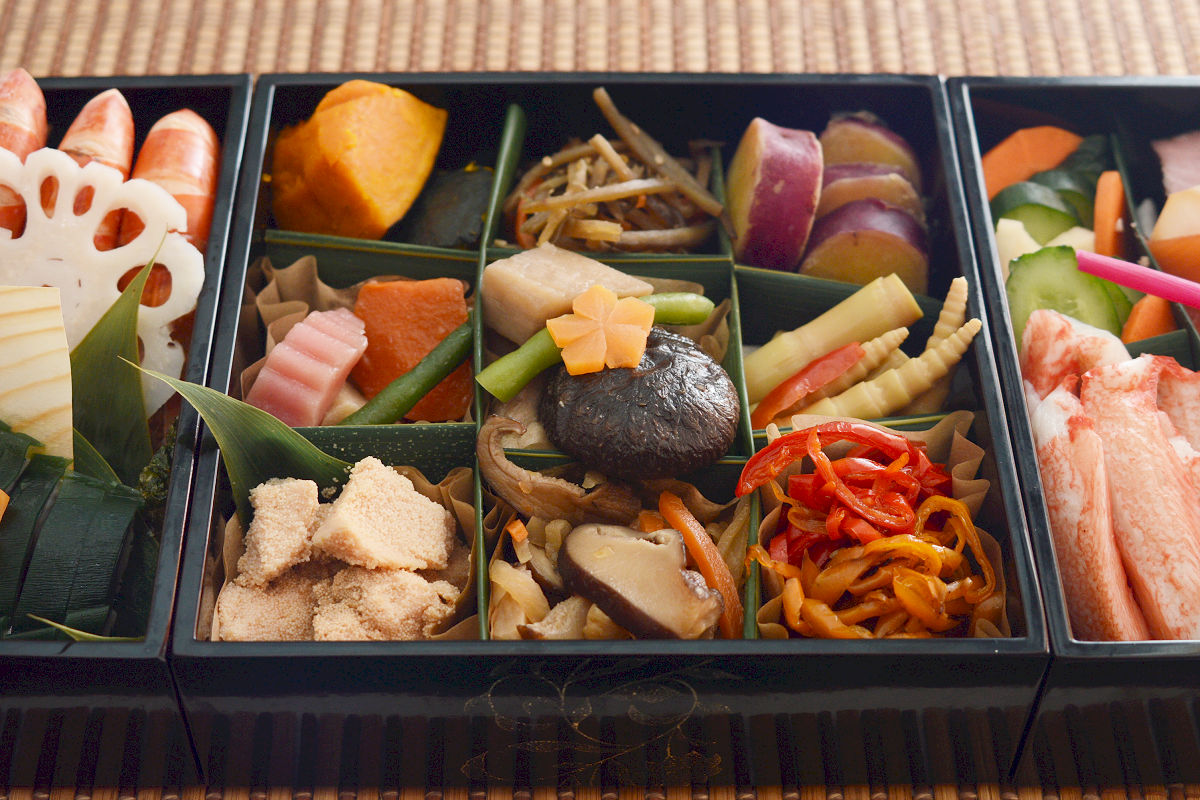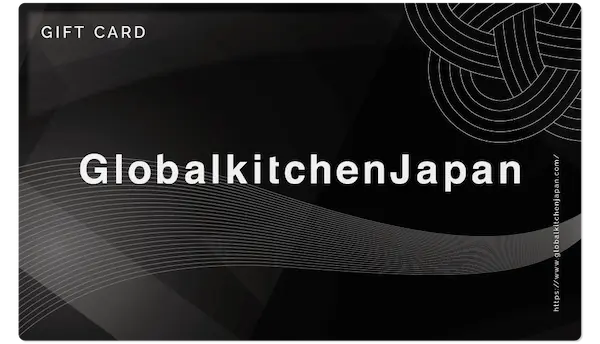In Japan, it is customary to eat Osechi-ryori during the New Year.
On New Year's Day, the most special of the year's festivities, people celebrate the New Year with their families or close friends by preparing Osechi-ryori as a special event meal.
In this article, we will introduce what Osechi-ryori is all about.
The product we used:
What is Osechi-ryori?

It is a traditional dish that has been handed down for 2,000 years as an offering to the god of the year (Toshigami-sama) based on Japanese mythology.
Originally, it was called "Osechiku/Osetsuku" or "Sechie" as an offering for the annual milestone and eventually came to be called "Osechi".
It was a simple New Year's offering in ancient times. It has developed into a wide variety of styles with time passage and is now established as a New Year's dish.
Looking around the world, there are many classic New Year's dishes such as Black-eyed peas in America, Zampone in Italy, Perimeni in Russia, and Tteokguk in Korea. Japanese Osechi-ryori is also a good-luck dish similar to these, but it is characterized by its large number of items and it was originally used as a preserved food.
Types of Osechi-ryori

Osechi-ryori is generally packed in the "Jubako box" which is used for celebratory events. The traditional Jubako box is lacquered beautifully.
It can be stacked in several layers, usually in three or five tiers.
In a five-tier Jubako box, the top tier (the first tier) is filled with dishes called "Iwaizakana" and "Kuchidori" (appetizers for sake). It is the first step you see when you open the box, so they are appropriate for a festive occasion and go well with sake. For example, Kuromame (black beans), Kazunoko (herring roe) marinated with soy sauce, Kouhaku-kamaboko (red and white colored fish cake), Kuri-kinton (chestnut paste), and Tazukuri (Japanese anchovy coated with sweet-and-salty sauce) are popular.
The second tier is filled with "Yakimono" (grilled dishes) such as grilled seabream, grilled shrimp, roast beef, or duck roast. This is for enjoying the main dish.
The third tier is filled with "Sunomono" (vinegared dishes). Traditionally, Kouhaku-namasu (pickled white radish and carrot), Surenkon (vinegared lotus root), Kohada (Japanese Shad) millet pickles, and Kikka-kabu (decorative chrysanthemum-shaped cut turnips) are preferred, but pickles or marinated vegetables may be substituted. Please drain off as much water as possible before packing to prevent the inside of the box from getting dirty.
The fourth tier is filled with "Nimono" (simmered dishes). It is made by simmering various vegetables in a sauce based on soy sauce, mirin (cooking sake), sugar, and sake. You can also simmer meat or fish in bouillon or wine for a European-style dish.
The fifth tier is called "Hikaeno-ju" and is left empty. It means "to leave a blank space for wishing for future development and prosperity".
When you use a three-tiered Jubako box, please fill with Iwaizakana and Kuchidori in the first tier, Yakimono and Sunomono in the second, and Nimono in the third.
How to fill Osechi-ryori in the Jubako box

You definitely would like to use a classy and luxurious lacquered Jubako box for Osechi-ryori.
Lacquerware, with its beautiful luster, is one of the traditional Japanese crafts and has a history of 9,000 years. Osechi-ryori in a lacquer-ware Jubako box will make it look more appropriate for your special occasion.
There are some traditional rules for packing Osechi-ryori, although they are not always followed. First, the number of dishes to be filled in the first tier must be 3, 5, 7, or 9 kinds. This is because an even number divisible by two is associated with "farewell" or "failure," which is considered unlucky and not appropriate for a festive occasion.
Also, there is the concept of "Ukou-Sahaku" (right red, left white) for celebratory occasions. It is based on the idea that darker-colored and gorgeous items should be placed on the right side and lighter-colored and simple items on the left side. So, it is recommended to place the dishes, for example, red shrimp and meat on the right side of the Jubako box, and red and white Kamaboko would put red on the right and white on the left side-by-side.
In addition, it is easier to fill the Jubako box with heavier dishes or dishes with solid shapes first to arrange them beautifully.
Please use bamboo leaves or dividers between dishes to prevent the transfer of aromas or colors of each food.
Standard menu of Osechi-ryori

Here are the standard menus for Iwaizakana, Kuchidori, Yakimono, Sunomono, and Nimono. These are traditional Japanese dishes for Osechi-ryori, but some ingredients may not be available in your area. In that case, please arrange them flexibly using your local ingredients.
Iwaizakana & Kuchidori (appetizers)
- Kuromame...Black beans boiled in sweetened water. Always soaking them in hot water to prevent them from wrinkling.
- Kazunoko...Salted herring roe is desalinated and pickled in a seasoning made with soy sauce, Japanese soup stock, and sake.
- Tazukuri...A lucky dish for a good harvest. Dried sardines are boiled down in a seasoning of soy sauce, mirin, and sugar.
- Tatakigobou...Peel and dice the burdock so that the flavor can soak in easily. Lightly simmer them in a seasoning liquid made from soy sauce, mirin, and vinegar, and sprinkle with white roasted sesame seeds.
- Datemaki...A mixture of minced shrimp or white fish, beaten egg, and Japanese soup stock, baked and rolled up like a Dashimaki-tamago (Japanese omelette).
- Kouhaku-kamaboko...Combining ground white fish with egg white, then steaming or baking them. It is difficult to make Kamaboko at home, so it is common to use ready-made fish cake.
Yakimono (grilled dishes)
- Grilled seabream...Sprinkle the sea bream fillets with salt and grill. Sea bream is pronounced "Tai" in Japanese and is considered to be auspicious because it is included in the pronunciation of "Medetai", which means "Happy". Sometimes, the whole grilled seabream with its tail head will be served individually.
- Teriyaki yellowtail...Yellowtail changes its name according to its size in Japan, the so-called "success fish". So, it is a lucky fish that carries a wish for success in life. It is often used as teriyaki in Osechi-ryori.
- Grilled shrimp...Heated prawns turn a beautiful red and white color and are considered an auspicious food in Japan. Whole prawns are grilled with salt or boiled in hot water with sake.
Sunomono (vinegared dishes)
- Kouhaku-namasu...A classic dish of Osechi made by marinating daikon radish and carrot in sweet vinegar. You can enjoy the combination of white and red, which are traditionally considered auspicious color schemes in Japan. Root vegetables have the meaning of "putting down roots" and are also an auspicious dish, perfect for New Year's Day.
- Surenkon...A lotus root with many holes is an auspicious vegetable that means a bright outlook because it has "good visibility". The lotus root simmered in sweet vinegar is crisp and perfect for a side dish.
Nimono (simmered dishes)
- Bamboo shoots boiled in a broth ...Bamboo shoots, which grow rapidly and reach the heavens, are an auspicious food associated with great growth and development. It is usually cooked by boiling it in a salty-sweet soy sauce with Japanese broth.
- Simmered Kuwai (arrowhead) ...The kuwai, which sprouts straight upward, is often used in Osechi-ryori as a food of good luck just the same as bamboo shoots. It has a strong bitterness, so parboil it in the water used to wash the rice to remove the bitterness.
- Chikuzen-ni...A standard Osechi dish consisting of various root vegetables such as carrots, burdocks, potatoes, and chicken stewed together.
Let's make New Year's Day gorgeous with Osechi-ryori!
Osechi-ryori is a food culture that has many different types and contents that vary from region to region.
You can use any ingredients to make Osechi-ryori. So, please try making your own special Osechi dishes using fresh local food.
Even if it is not Japanese cuisine, it will look more authentic in a lacquered Jubako box. Why don't you spend the upcoming New Year's holiday enjoying traditional Japanese culture?





